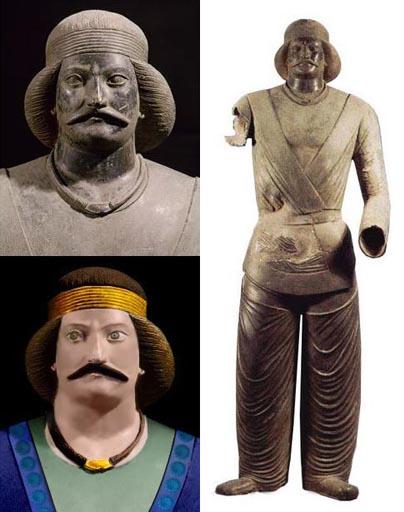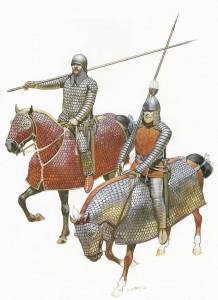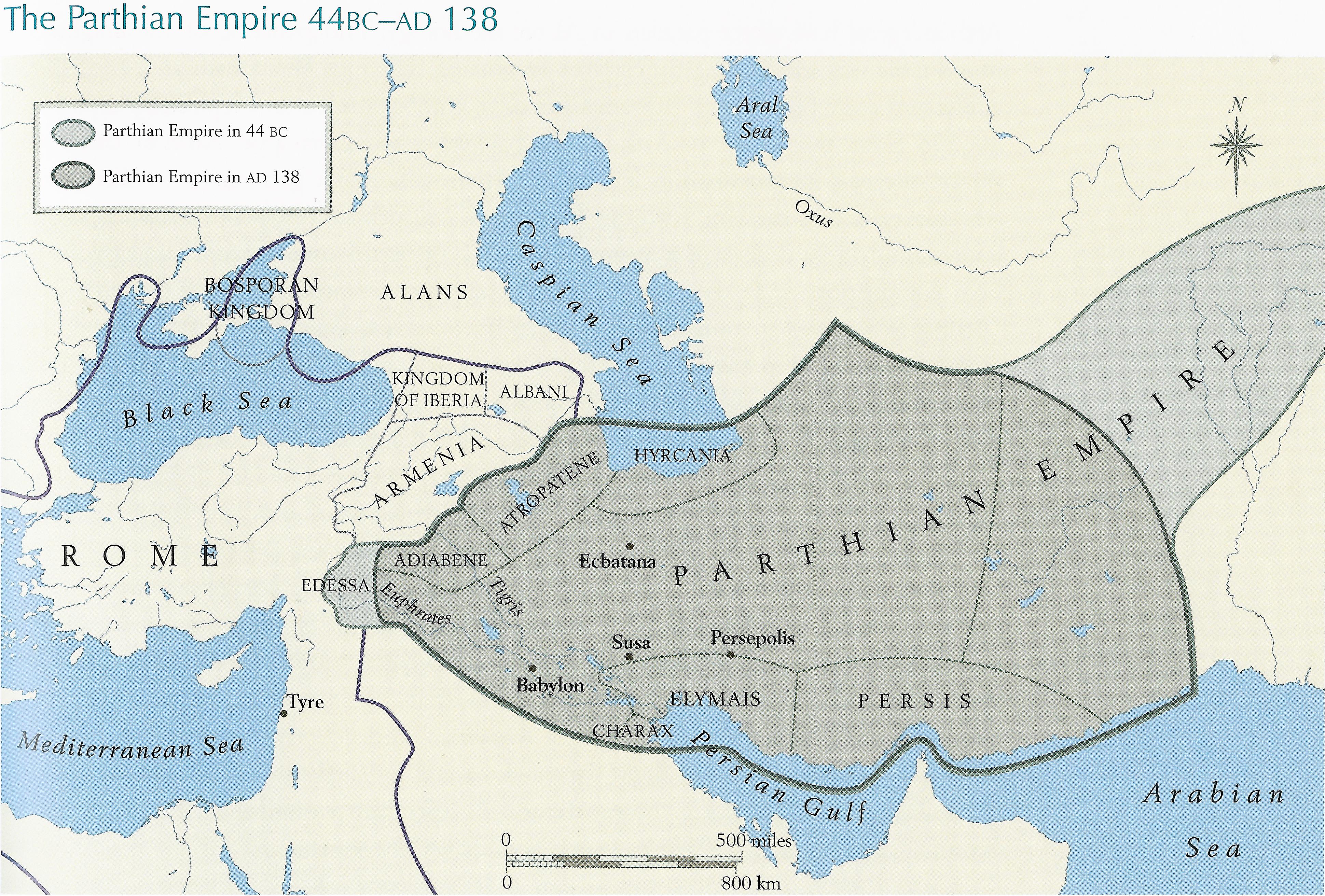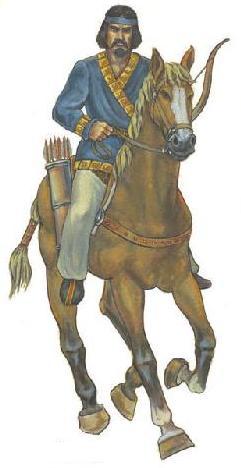The article below on the origins of the Parthians is authored by the late Professor Shapur Shahbazi and was originally posted in the Encyclopedia Iranica). Readers are also referred to Professor Shahbazi’s article on the Parthian army (kindly click the picture below):
============================================
Our sources on the ancestry of the eponymous founder of the dynasty, Arsaces, vary irreconcilably. He is introduced as a bandit who seized Parthia by attacking and killing its satrap, Andragoras (Justin 41.4; Ammianus Marcellinus 23.6.2); as a Bactrian who found the rise of Diodotus unbearable, moved to Parthia, and securing the leadership of the province, rose against the Seleucids (Strabo 11.9.3); or as a Parni chief of the Dahae Sacians, who conquered Parthia shortly before Diodotus’ revolt (ibid., 11.9.2).
A fourth account alleges that “the Persian” Andragoras whom Alexander left as satrap of Parthia was the ancestor of the subsequent kings of Parthia (Justin 12.4.12). A fifth version had been provided by Arrian in his Parthica, now lost, which was epitomized on this point by Photius (Bibliotheca 58) and the twelfth-century Syncellus (Corpus scriptorum historiae Byzantinae XIII, ed. W. Dindorf, Bonn, 1829, p. 539). Photius’ epitome runs as follows: “Arsaces and Tiridates were brothers, descendants of Phriapites, the son of Arsaces [Syncellus: the brothers “were allegedly descendants of the Persian Artaxerxes”]. Pherecles [Syncellus: Agathocles], who had been made satrap of their country by Antiochus Theus, offered a gross insult to one of them, whereupon … they took five men into counsel, and with their aid slew the insolent one. They then induced their nation to revolt from the Macedonians and set up a government of their own.” Finally, the Iranian national history traced Arsaces’ lineage to Kay Qobād (Ferdowsī, Šāh-nāma VII, p. 116; Ṭabarī, I, p. 710), or to his son Kay Āraš (Ṯaʿālebī, p. 457), or to Dārā the son of Homāy (Ṭabarī, I, p. 704; Bīrūnī, The Chronology, p. 118), or even to the famous archer, Āraš (Šāh-nāma VII, p. 115; anonymous “authorities” apud Bīrūnī, op. cit., p. 119). A reconstruction of the face on the statue of a Parthian nobleman housed at Tehran’s Iran Bastan Museum (Picture Source: Parthian Empire). These reports reflect developments in political ideologies. Humble origin and robbery are folkstories told also of Cyrus, Sāsān, and other dynastic heroes. The association with Āraš the archer was occasioned by similarity in names and the fact that Arsaces is figured on Parthian coins as a bowman (cf. A. v. Gutschmid in ZDMG 34, 1880, p. 743), although the bow was always regarded as a royal symbol. “The Persian Artaxerxes” in Syncellus has generally been taken to mean Artaxerxes II because Ctesias said (apud Plutarch, Artoxares 2) that he was called Arsaces prior to his coronation (A. v. Gutschmid, Geschichte Irans und seiner Nachbarländer, Tübingen, 1888, p. 30, and others). But this ignores the fact that Artaxerxes I also was called Aršak/Arsaces, Babylonian Aršu (A. Sachs, “Achaemenid Royal Names in Babylonian Astronomical Texts,” American Journal of Ancient History 4, 1979, pp. 131ff.). Parthian Horse Archer (Picture Source: Civilization fanatics) The tradition that Arsaces was a Parni chief is supported, as R. N. Frye has noticed (The History of Ancient Iran, Munich, 1983, p. 206), by a statement in Bundahišn (35.43f.) according to which Dastān (= Zāl), “Prince of the Sacas” and Aparnak, Lord of Aparšahr (later Nīšāpūr) were descendants of Sām: “Aparšahr is thus named because it is the land of the Aparnak” (corrected translation in Frye, loc. cit., with n. 3). By the middle of the third century B.C., the Parni appear to have been assimilated to the Iranian Parthians: They adopted the latter’s name, bore purely Iranian—even Zoroastrian—names (Lassen, Indische Altertumskunde II, Bonn, 1847, p. 285 n. 3, could connect the name of Arsaces’ father, Phriapites, with an Avestan *Friya pitā “father-lover” = Greek Philopatros). On his coins, Arsaces wears Sacian dress but sits on a stool (later ampholas) with a bow in hand, as Achaemenid satraps, such as Datames, had done before. He deliberately diverges from Seleucid coins to emphasize his nationalistic and royal aspirations, and he calls himself Kārny/Karny (Greek Autocratos), a title already borne by Achaemenid supreme generals, such as Cyrus the Younger (see for details M. T. Abgarians and D. G. Sellwood, “A Hoard of Early Parthian Drachms,” NC, 1971, pp. 103ff.). [Click to Enlarge] Partho-Sassanian belt buckle dated to the 2nd or 3rd century CE (Picture source: Farrokh, page 143, Shadows in the Desert: Ancient Persia at War-Персы: Армия великих царей-سایههای صحرا–). Later Parthian kings assumed Achaemenid descent, revived Achaemenid protocols (J. Neusner, “Parthian Political Ideology,” Iranica Antiqua 3, 1963, pp. 45ff.), and Artabanus III, who named one of his sons Darius (Dio Cassius 59.27), laid claim to Cyrus’ heritage (Tacitus, Annals 4.31). On the whole, then, onomastic, numismatic, and epigraphic considerations point to the conclusion that the Parthian dynasty was “local, Iranian by origin;” on this ground “the Zoroastrian character of all the names of the Parthian kings, and the fact that some of these names . . . belong to the “heroic background” of the Avesta,” afford logical explanation (G. V. Lukonin in Camb. Hist. Iran III/2, 1983, p. 687).








